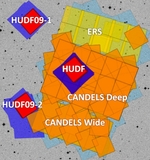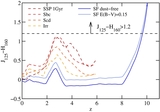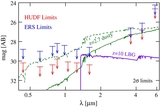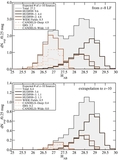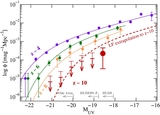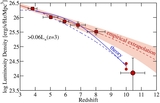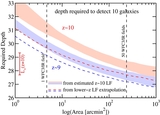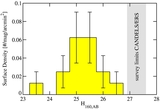Image Details
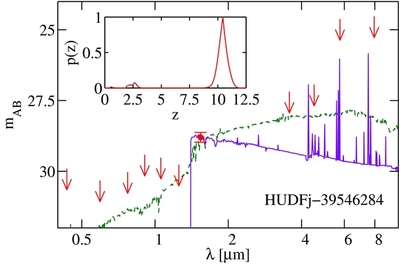
Caption: Figure 5.
Best-fit SED of the only viable z ~ 10 candidate, previously reported in Bouwens et al. (2011a). The measured photometry is shown with the red circle with errorbars and with 2σ upper limits in the case of non-detections. All fluxes and flux errors were used in the SED fit, however, even if they were negative. The best-fit SED is found at z phot = 10.4 and is shown as a solid line (χ 2 best = 7.0), corresponding to a dust-free, young galaxy. The best template for a low-redshift solution is also shown as the dashed green line. This SED has a redshift of z lowz = 2.7 and is passive with an age of 650 Myr and of rather low mass (only 3 × 10 8 M ☉). Additionally, the low- z SED is reddened with E( B − V) = 0.1 mag. Based on its larger χ 2 value (χ 2 lowz = 13.7), this SED is formally excluded at >90% probability, however. The redshift probability function is shown in the inset in the upper left. The sharp decrease above z ~ 10.5 of p( z) is due to the use of an LF at z > 8 and due to the fact that Lyα absorption starts affecting the H 160 band (which would require the source to be brighter intrinsically).
Copyright and Terms & Conditions
© 2012. The American Astronomical Society. All rights reserved.


